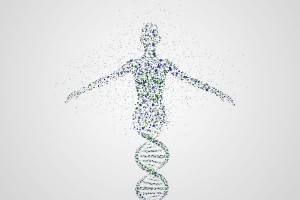Learning For Health
Surgical observation is good practice for physical therapy practitioners – the osteopath, chiropractor, physiotherapist – working in an integrative way as a team is the difference between a chiropractor and an osteopath? What is the difference between an osteopath and a physio?
Observation
Why I do surgical observation boils down to 4 simple things that distinguish the way I work from other physical therapists.
- Anatomy Safe, Clinical, Practical, Effective
- Tissue Health is dynamic Safe, Clinical, Practical, Effective
- Gut Health is dynamic Safe, Clinical, Practical, Effective
- Functional Medicine Safe, Clinical, Practical, Effective
– Anatomy – Structure Governs Function – Osteopathic Principle in practice
Guess what? The human body is not a textbook. Guess what else? A live human body with live tissue structures is unique.

Personalised Nutrition
Functional Medicine incorporates the latest in genetic science, systems biology, and understanding of how environmental and lifestyle factors influence the emergence and progression of disease. At Susannah Makram Clinics we use this model in our Naturopathic approach to nutrition as prescription
Functional Medicine addresses the underlying causes of disease, using a systems-oriented approach and engaging both patient and practitioner in a therapeutic partnership.
Susannah Makram believes in knowing the right treatment that is best for the patient at every step. This begins by booking a consultation with Susannah to find out the factor or factors influencing your complaint.
Doctor comes from the Latin Docere which means to teach and this is applied throughout Susannah’s time with patients during the ongoing treatment or treatment. Consistent reassessment in order to confirm or reject a diagnosis and offer a prognosis based on the decision made by the patient to progress with treatment requires clear and effective communication between the patient and Susannah.
– Tissue Repair & Gut Health – Health is more than the absence of disease
An MRI scan or CT scan or an x-ray do not expose the integrity of tissues inside and outside of joint capsules to the degree that an endoscopic surgical procedure can.
At Susannah Makram Clinics we carry out consultations and a physical exam and any special testing to include:
Orthopaedic testing. Cranial and peripheral nerve function assessment. Blood pressure, pulse, and further special testing related to gut health. We carry out saliva or buccal swab testing if this is the accurate and convenient way to capture data by testing.
Capturing genetic material for use in healthy weight loss for stubborn fat or weight gain using The Obesity Gene Map Blood work is sent for when necessary to produce accurate results. These are sent back to Susannah and used to help personalise your treatment for your complete care. Skin prick testing for food allergies, testing for hormonal imbalances and food intolerance test may also be recommended for this purpose.

Functional Health
Naturopaths use a holistic approach and recognise that health is more than the absence of disease. Naturopathic nutrition is a type of nutritional therapy that relies on the background of your practitioner. Osteopaths are highly competent healthcare professionals, recognised by the NHS as fully qualified to diagnose and treat independently.
Functional care address the WHY. WHY are you unwell? this is what needs to treated in order that you are able to take ownership of your health. Otherwise, what tends to happen unfortunately, is that a lot of effort is made but results are the same.
Good gut health relies on an environment that is conducive to nutrient absorption. pH levels must be optimal and structural obstructions or lesions in the lining of the gut must be pinpointed and their cause revealed in order that the Susannah Makram Naturopathic Nutritional Portfolio for you is safe, clinical, practical and effective. In the Four Phases.

